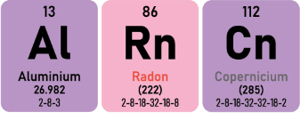Eporner HD Sex Porn Discounts Sex Games Porn Games XXX Games Hentai Games PornStar Games 3D Porn Cams Party BEST OnlyFans Free Onlyfans
Live Sex Free Live Sex Free Sex Games Páginas Porno Rose Toy Nude Celebrities Celebrity Sex Videos TikTok Porn FaceSwap Porn AI Girlfriend
Live Sex Free Live Sex Free Sex Games Páginas Porno Rose Toy Nude Celebrities Celebrity Sex Videos TikTok Porn FaceSwap Porn AI Girlfriend
Published on 2021/02/25
















VIKTOR VOROBIOV 2021
Two years ago we were able to enjoy the work of photographer Viktor Vorobiov. This gentleman tends to seek the most artistic approach to capture female anatomy. Today we're going back to review some of his recent work.















VICTORIA SALCEDO ONLY HAS ONE LEG, BUT SHE IS VERY HOT
At just 5 years old, while skating with some friends, Victoria Salcedo suffered the misfortune of getting an electric shock after grabbing a metal rod that was touching a high-voltage cable. She lost both arms and one leg. Even so, Victoria shares through her social media an incredible strength and joy for life. And as if that wasn’t enough, she’s stunningly beautiful.

# Watch videos
ExtraBall
Chug! Chug! Chug!
ExtraBall2
(Clicking on these links daily you support ALRNCN's work. They're collaborators or sponsors and, by visiting their sites, they like us even more)










AMATEUR FLESH: VALORIE
Valorie is a 19-year-old college girl with boobs so big that if she ever quits studying, they’d count as a degree in the school of life.

# View photos and videos
ExtraBall
(Clicking on these links daily you support ALRNCN's work. They're collaborators or sponsors and, by visiting their sites, they like us even more)









 CamBB.xxx
CamBB.xxxWe find the best live porn cams across many different cam sites like Streamate, Chaturbate, Cam4 and Stripchat.
 ChatSex.xxx
ChatSex.xxxWith Chat Sex you get free sex cams featuring nude cam girls you can chat with for free.















RECOMMENDED SITES
 Add your site
Add your site
- Porn Pics
- Motherless
- BoobieBlog
- sweetlicious
- celeb-stalker.com
- Erotic Beauties
- Babes & Bitches
- Kanoni Net
- perfectnaked
 Add your site
Add your site💩 CrazyShit
🤪 eFukt
NudeChatGirls
👉🍑 Top XXX Pictures
Bingo Porno
Best Porn Blog Sites
 Sex Games
Sex Games
Real Amateur Porn
MrPornGeek
Comepollas
PornScn Free Porno
AI Girlfriend App
Hardcore Porn Videos
NSFW.Tools
Sex AI Chat
Porn Game
ShareAnyNudes
Teenager365

















KIRILL MEDVEDEV 2025
A look back at the latest shots shared by photographer Kirill Medvedev (kiramed) since the last feature we dedicated to him last year.

# View photos
ExtraBall
Women-only gym. Safe spaces, no men allowed.
ExtraBall2
(Clicking on these links daily you support ALRNCN's work. They're collaborators or sponsors and, by visiting their sites, they like us even more)











CONQUER YOUR FEAR OF FLYING VOL4
At ALRNCN we’ve done this three times before: first with Aerophobia and How to Fight It, then with They’ll Help You With Your Fear of Flying, and later with Conquer Your Fear of Flying. It’s been over twelve months since that last installment, but the wait was worth it because, yes, we can now officially call this a saga.
The idea is simple: if you’re afraid of getting on a plane, what you need isn’t a psychology manual, but a positive stimulus. Something that makes the takeoff, the turbulence, or even that cramped seat an experience linked to pleasure, not panic.
And that’s where they come in: creators who discreetly take advantage of the flight to record themselves. In their seat, in the bathroom, or hidden in the aisle, what they do is give the trip a whole new meaning. Because when your mind starts to associate “planes” with “them,” the fear fades away.
The anxiety might not vanish completely, but trust me— with this kind of company, the plane stops being an enemy and becomes an ally.

# Watch videos
ENLACE DE INVITACIÓN PARA ACCEDER A NUESTRO GRUPO PRIVADO DE TELEGRAM
Hoy compartimos un enlace de invitación para poder entrar en nuestro GRUPO PRIVADO de TELEGRAM. Si has estado esperando este momento, por fin ha llegado.
Para poder entrar necesitas tener una cuenta en TELEGRAM. Es muy fácil de crear. Basta con entrar desde tu PC o desde tu SmartPhone en https://telegram.org y seguir los pasos para crearte una. Para que te hagas una idea Telegram es como Whatsapp, pero mil veces mejor.
Una vez que hayas completado los pasos podrás ver incluso la gente que tienes en la agenda de contactos y usa Telegram
Vale ¿Ya tienes cuenta? Pues entonces, pulsa en este ENLACE de INVITACIÓN y entrarás automáticamente: https://t.me/+kOCrAzzo_BI5ZTNk
En el GRUPO de TELEGRAM de ALRNCN todo el mundo puede hablar y compartir contenidos. Si es la primera vez que entras, puedes saludar (si quieres) y curiosear lo que la gente va compartiendo. Nuestro GRUPO es una extensión de la web, así que los contenidos que verás van en la línea de los contenidos que compartimos diariamente en nuestra web.
Se bienvenido y disfruta.
Este enlace de invitación dejará de funcionar en 24/48 horas.
Para usuarios de Apple
Si al entrar en nuestro Canal de Telegram te aparece un mensaje de que el contenido es para adultos y no puedes ver nada, entonces es que tienes activada la protección para adultos.
Tienes que ir a la versión web del Telegram https://web.telegram.org e identificarte, si no lo estás ya. En la configuración, en la sección "Privacidad", buscar la opción "Materiales sensibles" y activar "Desactivar restricciones". En cuanto lo hagas, el ajuste se sincronizará automáticamente con el resto de tus aplicaciones, incluidas las versiones para iOS y macOS de la App Store.
A partir de ahí ya podrás entrar en todos los Canales para adultos.
ExtraBall
James Brown - I Feel Good
ExtraBall2
(Clicking on these links daily you support ALRNCN's work. They're collaborators or sponsors and, by visiting their sites, they like us even more)










Contact
You can tell us whatever you want via email: [email protected]
If you prefer, you can use this contact form:
If you prefer, you can use this contact form:






THE EROTIC EYE OF GB62DA3
A German creator who picked up the camera back in 1995 and never really put it down. What started as a hobby turned into a quiet obsession — a way to explore portraiture, erotic art, and the raw beauty of the human body.
He’s not a full-time professional, but his work feels anything but amateur. There’s maturity, emotion, and a way he balances light, form, and feeling that hits deeper than filters and studio tricks.
Every shot feels like a soft invitation — a slow moment of intimacy and quiet honesty, where the body speaks without trying too hard.

# See photos
ExtraBall
Candy rain.
You can watch plenty of Belle Delphine videos here
ExtraBall2
(Clicking on these links daily you support ALRNCN's work. They're collaborators or sponsors and, by visiting their sites, they like us even more)







ASIA AND THE REALDOLLS
There’s something most people still aren’t fully clocking, but you and I already see it: Asia has been playing in a different league with RealDolls for years. And I’m not just talking about hyper-realistic bodies. I’m talking tech, culture, and a future mindset. They don’t hide it, don’t sugarcoat it, and don’t pretend it’s “not what it looks like.” They say it straight: this exists, there’s demand, there’s money, and we’re gonna do it right.
And yeah, you start watching these videos and your jaw just drops. Skin, facial cues, movement… and that weird moment when you realize that if someone told you this years ago, you’d laugh. But now you see it on Instagram and go: “Damn. Damn, damn.”
Meanwhile in the West we’re still stuck in that half-moralistic mode. Everyone knows they exist, everyone looks, but from the corner of their eye. Nobody wants to be the first to say out loud: yeah, it’s a real option.
We love the social pose, but then the internet is on fire with searches and sales. We’re like that: hypocrites, but curious.
The difference is, in Asia they’ve removed the drama. They see it as just another product: technology, company, fantasy, future. Not a “you must be weird if…” but a “hey, if this works for you, go for it.”
And let me tell you something: with what they’re building, that “taboo” doesn’t have long to live. Call it a trend, evolution, or pure pragmatism. But it’s coming. For younger generations, it won’t be strange at all. And the moment the convo shifts from “that’s so wild” to “have you seen this model?”, a lot of the people sneak-watching now are gonna jump in.
This isn’t sci-fi anymore — it’s market, it’s technology, and it’s desire. And it’s already happening.

# Watch videos
ExtraBall
When the universe lines up with you.
ExtraBall2
(Clicking on these links daily you support ALRNCN's work. They're collaborators or sponsors and, by visiting their sites, they like us even more)












































